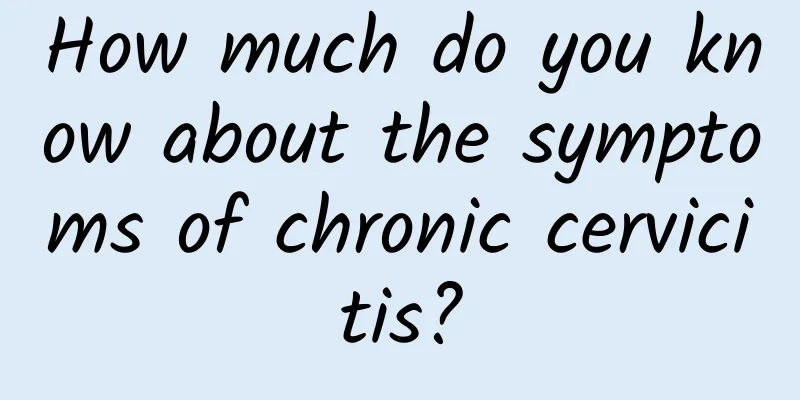TCM treatment of dysmenorrhea that highlights the essence of traditional Chinese medicine

|
|
<<: Traditional Chinese medicine treatment of pelvic inflammatory disease
>>: Start preventing annoying menstrual cramps from small things
Recommend
Will cervical laceration cause cervical adhesion?
Cervical lacerations may lead to cervical adhesio...
Don't count calories! 3 healthy diets for weight loss
I try my best to count calories, control each mea...
What foods should not be eaten for endometrial tuberculosis
Endometrial tuberculosis is very harmful to women...
Common early symptoms of cervicitis
Cervicitis is a common disease among women. There...
Remove armpit fat! Do 4 quick stretching exercises
The following exercises can strengthen your mitra...
How to eat Mid-Autumn Festival delicacies? Four principles to get rid of the burden
The Mid-Autumn Festival is approaching, and moonc...
What to check for abnormal vaginal discharge in women
Women with abnormal vaginal discharge need to und...
Eating while standing or sitting, could posture affect satiety?
"Appetite" recently published the lates...
What should I do if I feel body aches during menopause? Let’s find out.
Women who experience body aches and pains during ...
How to regulate irregular menstruation in 18-year-old girls? Common examination methods for irregular menstruation in girls
What to do if you have irregular menstruation at ...
There are several reasons why uterine fibroids affect pregnancy.
If uterine fibroids are severe, they will affect ...
What is immune recurrent miscarriage? Let's take a look at it together.
Immune recurrent miscarriage refers to autoimmune...
Tips for preventing and treating threatened abortion
There are many reasons for threatened abortion, i...
What medicine is good for curing fungal vaginitis?
What medicine is good for curing fungal vaginitis...
How many days of pregnancy is better for abortion
There is no best time to have an abortion. Unders...









